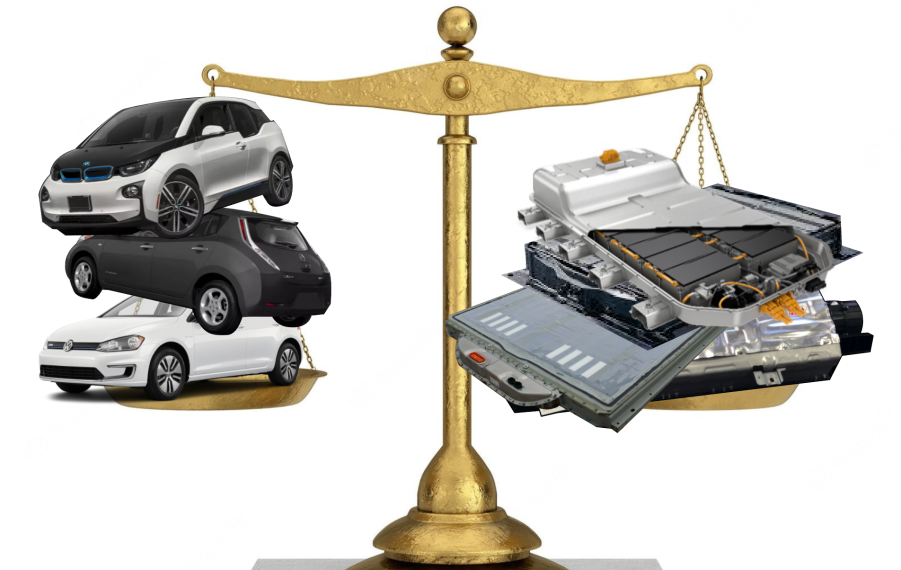
You Won’t Believe the Cost for New Batteries in These Affordable EVs
You can get some pretty good deals on some higher-mileage electric vehicles right now. But isn’t the shelf life of an EV battery about 10 years? Hmmm. But that’s OK, if the battery poops out you can just replace it, right? Before you spring for that used EV, you better check out the prices for replacement batteries. It is pretty shocking.
You need to know what a replacement battery, and the labor to replace it, will cost if you’re eyeing that i3 or Bolt. Sometimes you can only determine prices through eBay, as some manufacturers, like Tesla, don’t give out what their EV batteries cost.

The labor is a different story. It will run between $1,500 and $3,000 to replace your battery, depending on the locale. So let’s take the six least expensive EVs and see how those replacement batteries really are. You may find the risk isn’t worth the savings. But it also raises difficult questions about what happens to EVs when their EV batteries are too expensive to replace.
Chevrolet Bolt EV

Probably the cheapest EV you can buy used is a Chevrolet Bolt. The first models arrived in 2016, so they’re inching closer to that battery replacement deadline. Used 2016 and 2017 Bolts are running around $21,000, depending on location, mileage, etc.
Chevrolet did something good for the consumer with its battery layout. It separated the battery pack into 10 separate batteries. So you wouldn’t necessarily have to replace the entire battery assembly, but rather only the dead section at a time. Each of those sections runs just under $1,000.
So you could onesie-twosie battery replacement, or replace the entire assemblage for a bit under $10,000. There is still labor to add with either choice, so you’ll have to factor that as well. Though costing roughly half of what you would pay today for a used Bolt, it’s a lot cheaper than the next EVs we’ll look at.
Hyundai Ioniq EV batteries

Introduced in 2017, it averages around the same price used as a Bolt. The difference is it has half the range of a used Bolt, which is 238 miles. With 128 miles of range when new, that number has dropped after five years and will continue dropping.
Unfortunately, Hyundai chose to integrate its batteries into one unit. So if the battery starts konking out, the whole unit must be replaced. A new Ioniq battery runs $17,845. In another year or two that cost will rise, and surpass the value of the car. So what happens to Ioniq EVs once they hit 10 years old?
BMW i3 EV

For affordability, the i3 offers more than most of the other EVs. Interiors are nicer, even though the range is similar to the Ioniq. The first i3s became available in 2014 so that 10-year battery life expectancy looms large.
BMW helped out some by splitting up the battery pack into eight sections. Each section costs $3,054. So to replace all of them will run $24,432. Surprisingly, most 2014 to 2015 i3s we see in the LA market are $21,000 or more. Once the batteries become dead, only a used battery will make sense as a replacement, or maybe not.
Nissan Leaf EV batteries

The Nissan Leaf started off the whole consumer EV takeover, starting in 2010 as a 2011 model. These early models can be bought for under $10,000 right now. But reports of degraded batteries of these earlier models mean anyone with an older Leaf or thinking about buying one has to consider a battery replacement.
The price of a new Leaf battery, if you can even find one, is $10,000 plus $1,300 in labor. Rumor has it that if found, dealers will usually discount the batteries. But even for half the price, it really doesn’t pencil out.
Volkswagen e-Golf EV

With a battery range of only 83 miles, it was never clear why anyone bought Volkswagen’s e-Golf. The e-Golf came out in 2016, and pre-2018 facelift models sell for under $20,000. But the replacement battery price is $27,000.
Ford Mustang Mach-E EV batteries

Being newer, the Mach-E has the luxury of retaining its value right now. And that’s good for the owner because should you need to replace your battery, it will cost $25,319 before labor. That battery cost won’t go down over time, but the Mach-Es value will. At some point, it won’t be worth replacing it.
The salvation for older EVs, if there is one, is through used or reconditioned batteries. With a used one, you can see when it was manufactured to get an idea of the condition. It is still a bit of a leap of faith, but there aren’t alternatives to doing it.
As old EVs are put out to pasture, we’ll see how financially and environmentally positive EVs really are. The hope is that as EVs become more mainstream, production costs go down and technology improves, there won’t have to be the choice many will have to face being EV early adopters.



